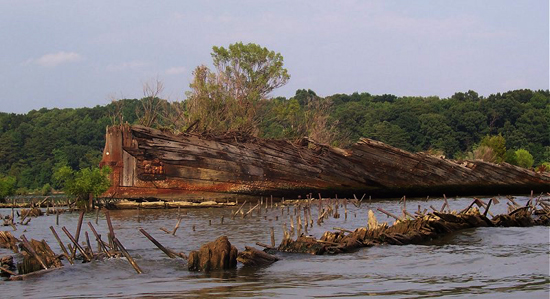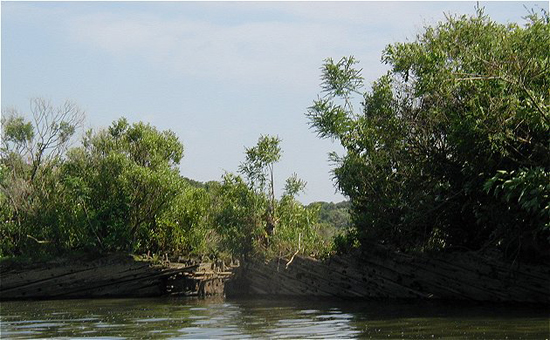Tributary Tuesday: Lost River (Hardy County, W.Va.)
True to its name, West Virginia's "Lost River" disappears into a series of underground caves.
True to its name, West Virginia’s “Lost River” disappears.
Lost River begins in West Virginia’s eastern panhandle. But just a few miles downstream, it flows into a series of caves and is carried underground. Known locally as “the Sinks,” these caves shelter the river until it reaches Wardensville, where it emerges under a different name: the Cacapon.

Image courtesy Mark Plummer/Flickr
Looking for Lost River? Catch a glimpse in the 3,700-acre Lost River State Park. And if the weather is hiker-friendly, take a trip up to Cranny Crow Overlook, where, at 3,200 feet high, you will be able to see five counties in two states. The park also offers opportunities for horseback riding and swimming.

Image courtesy vitia/Flickr
Explore the nearby Trout Pond Recreation Area to enjoy the only natural lake in West Virginia, created by a sinkhole that filled with water from a mountain stream. Trout Pond and the neighboring Rockcliff Lake boast sandy mountainside beaches, optimal fishing and challenging hiking trails.
More from Lost River:
- For local flavor, visit the Lost River Artisan's Cooperative, a museum that houses work from regional artists and Civil War-era artifacts found on the grounds.
- Consider planning your trip around the annual Heritage Weekend in Hardy County, W.Va., a celebration of quilting crafts, local architecture and fiddle, banjo and mandolin music.
- Nearby, the George Washington and Jefferson National Forests provide a stretch of “real wilderness” from one end of Virginia to the other, crossing into parts of West Virginia and Kentucky.

Comments
There are no comments.
Thank you!
Your comment has been received. Before it can be published, the comment will be reviewed by our team to ensure it adheres with our rules of engagement.
Back to recent stories